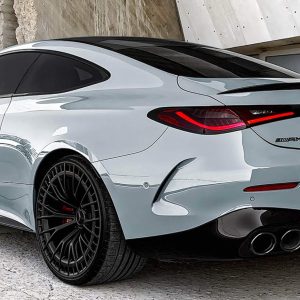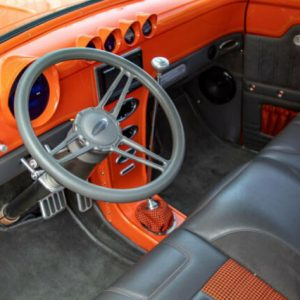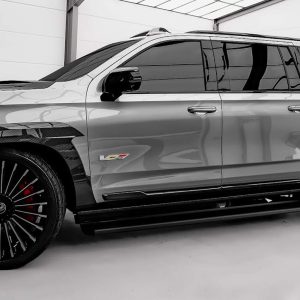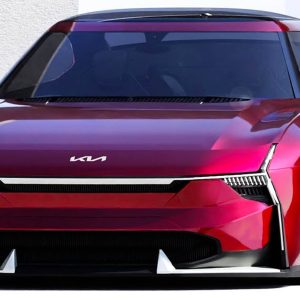The Stout Scarab is an iconic and innovative automobile that was produced in limited numbers during the 1930s.

Designed by William B. Stout, an aviation and automobile engineer, the Scarab was ahead of its time in terms of both engineering and design. It is considered one of the earliest minivans or MPVs (multi-purpose vehicles) due to its unique design and spacious interior.
The design of the Stout Scarab was ahead of its time and challenged the conventional norms of automotive design in the 1930s and 1940s. Its unique shape, modular interior, and innovative use of materials and technology made it a true standout among its contemporaries. Today, it remains an iconic symbol of automotive design and innovation
1. Cultural Significance
Design and Aesthetics
The Scarab’s unconventional design challenged the traditional notions of automotive aesthetics. Its streamlined, futuristic appearance stood out among the more boxy and conservative cars of the time. The Scarab represented a shift towards embracing modernity and forward-thinking design.
Technological Advancement
The Stout Scarab introduced several technological innovations that were far ahead of their time. The use of lightweight materials, like aluminum, and the adoption of independent suspension and a rear-mounted engine showcased engineering advancements. These features contributed to improved performance, comfort, and handling, setting a benchmark for future automobile design.
Symbol of Luxury and Exclusivity
The limited production and handcrafted nature of the Stout Scarab added to its allure and exclusivity. Owning a Scarab was a statement of wealth and sophistication. It became associated with the elite, cultural avant-garde, and those who appreciated unique design and engineering.
Influence on Future Designs
While the Stout Scarab didn’t achieve mass production or immediate commercial success, its influence can be seen in later automotive designs. The Scarab’s emphasis on passenger comfort, interior space, and flexible seating arrangements laid the foundation for the development of modern minivans and SUVs, which would gain popularity decades later. 
Limited Production
Despite its groundbreaking design and features, the Stout Scarab had a limited production run. Only a few dozen Scarabs were produced between 1932 and 1940, and each one was essentially custom-built to suit the buyer’s preferences.

Preservation and Legacy
Today, the surviving Stout Scarabs are considered highly collectible and are preserved as historical artifacts. They serve as a tangible reminder of an era characterized by experimentation, innovation, and the pursuit of automotive excellence. 
2. Design
The design of the 1930-1940 Stout Scarab was truly unique and revolutionary for its time. Here are some key design features and elements of the Stout Scarab

Streamlined Shape
The Stout Scarab featured a sleek and streamlined shape, inspired by aerodynamic principles. Its teardrop-like design minimized air resistance and created a sense of motion even when the vehicle was stationary. The smooth, curved lines gave it a futuristic and avant-garde appearance. 
Aluminum Body
The body of the Scarab was constructed using hand-formed aluminum panels. This choice of material made the car lightweight and contributed to its improved performance and fuel efficiency. The use of aluminum was inspired by aircraft construction techniques, as William Stout had a background in aviation engineering.

Modular Construction
The Scarab’s body was constructed in a modular fashion. The frame consisted of sections that were bolted together, allowing for easy disassembly and reconfiguration. This modular approach facilitated the customization of the interior space and seating arrangements, providing versatility and adaptability. 
Spacious Interior
The interior of the Scarab was designed to maximize space and comfort for the occupants. The absence of a conventional engine in the front allowed for a spacious and unobstructed cabin. The rear-mounted engine contributed to a lower floor and a more open and airy feel. Passengers could enjoy ample legroom and headroom, and the seating could be arranged in various configurations. 
Flexibility and Versatility
The Scarab’s interior was highly flexible and adaptable. The seats could be rearranged or folded flat to create sleeping arrangements or a dining/work table. The design aimed to accommodate the needs and preferences of the passengers, reflecting a forward-thinking approach to automotive design. 
Futuristic Details
The Stout Scarab incorporated various futuristic details and features. It had large, curved windows that provided excellent visibility and a panoramic view. The front grille was minimalistic and integrated seamlessly into the body, with no traditional radiator grille. The overall design aesthetic of the Scarab evoked a sense of modernity and innovation. 
Integration of Technology
The Scarab integrated advanced technological features for its time. It had independent suspension on all four wheels, contributing to a smoother ride and improved handling. The rear-mounted engine was a flat-six design, providing a low center of gravity and better weight distribution. 
3. Performance
Top Speed
The top speed of the Stout Scarab is estimated to be around 70-80 mph (112-129 km/h). This speed was quite respectable for a vehicle of its size and era. 
Acceleration
Due to the limited available information, specific details about the Scarab’s acceleration performance are not widely known. However, considering its horsepower output and the general performance capabilities of cars from that era, it is reasonable to assume that the Scarab had a modest acceleration compared to modern standards.

Handling and Suspension
The Stout Scarab featured an independent suspension system, which was relatively advanced for its time. This suspension setup provided a smoother ride and improved handling compared to many contemporary vehicles that still used solid axles.

Fuel Economy
Information about the fuel economy of the Stout Scarab is not widely available. Given its weight, engine size, and the era in which it was produced, it is likely that the Scarab had a relatively low fuel efficiency by modern standards.
Overall, the Stout Scarab’s performance was noteworthy considering its unique design and purpose as a spacious and versatile vehicle. While it may not have been a high-performance car in terms of speed or acceleration, its innovative features and advanced engineering made it a remarkable vehicle for its time.

4. Engine
Ford V8 Engine
The engine used in the Stout Scarab was a Ford V8 engine. Specifically, the first models of the Scarab, built in 1932, were equipped with a Ford flathead V8 engine. This engine was a 3.9-liter (239 cubic inch) displacement engine that produced around 85 horsepower. However, as the years went by, different versions of the Scarab were produced, and it’s possible that some later models may have had updated engine options. 
Placement
The Scarab’s engine was positioned in the rear, which was unusual for vehicles of that era. The rear-mounted engine allowed for a flat and low floor, creating a spacious and flexible interior layout. The car’s body was made of aluminum, which made it lightweight for its size. 





